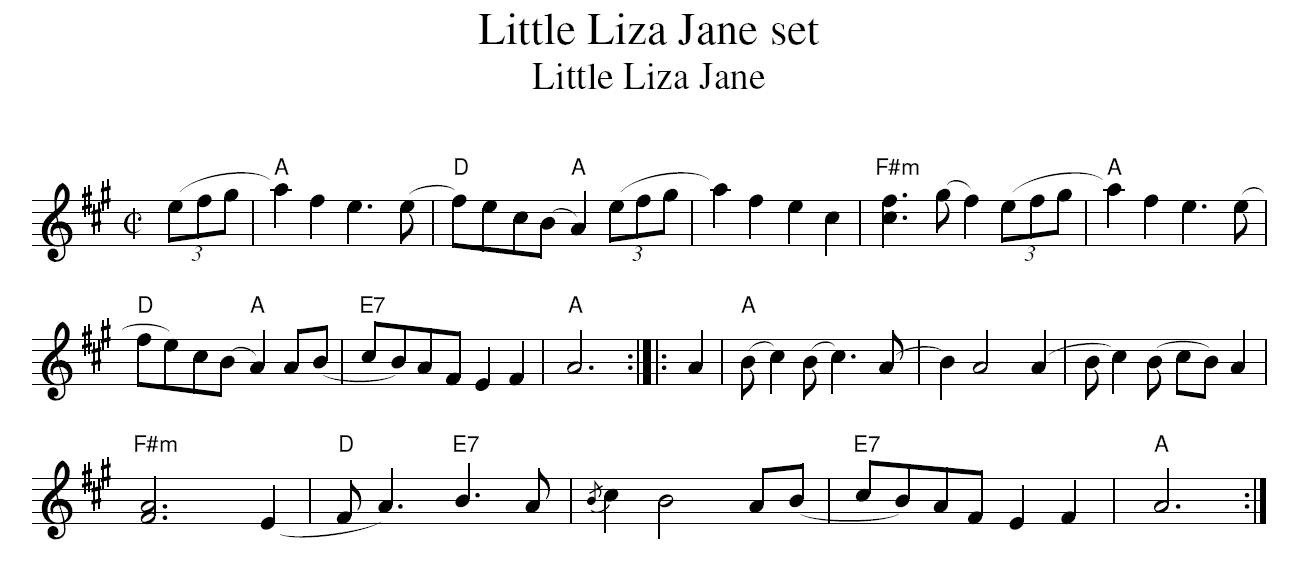Fun/Fanga (Fanga, also known as Funga)
This is a song that has dubious origins. Some say Fun/Fanga is a derivative rhythm introduced to this country by an American woman born in Port of Spain, Trinidad and Tobago, Dr. Pearl Primus (29NOV1919 - 29OCT1994) who as I hear the story, got the rhythm from Liberia or Nigeria as part of her anthropological work there (or she derived a variation of a Nigerian/Liberian rhythm with the song in the Vai language or as some say in Yoruba) as part of the celebrated "African Ceremonial", her 1943 professional debut.So Fun/Fanga has indeed enjoyed a long history and it is, as I overstand it, far removed from being a "traditional African rhythm" at this point.
"Little Liza Jane" and Fun/Fanga share the same tune.
"Little Liza Jane" Lyrics
I got a house in Baltimore,
Little Liza Jane,
Street cars running by my door,
Little Liza Jane.(clap)
Oh, Eliza,
Little Liza Jane,
(clap)
Oh, Eliza,
Little Liza Jane.Brussels carpet on my floor,
Little Liza Jane,
Silver doorplate by my door,
Little Liza Jane.(clap)
Oh, Eliza,
Little Liza Jane,
(clap)
Oh, Eliza,
Little Liza Jane.Come, my love, and be with me,
Little Liza Jane,
Let me take good care of thee,
Little Liza Jane.(clap)
Oh, Eliza,
Little Liza Jane,
(clap)
Oh, Eliza,
Little Liza Jane.
Fun/Fanga Lyrics (combined from several sources)
1.) Fanga ah lafiya, ashé ashé (x4)
Ashé ashé ashé ashé
Fanga ah lafiya, ashé, ashéCHORUS: Ashé ashé ashé ashé (x4)
2.) Ikabo ah lafiya ashé ashé (x4)
Ashé ashé ashé ashé
Ikabo ah lafiya, ashé, ashéCHORUS: Ashé ashé ashé ashé (x4)
3.) Elegua ah lafiya, ashé ashé (x4)
Ashé ashé ashé ashé
Elegua ah lafiya, ashé, ashéCHORUS: Ashé ashé ashé ashé (x4)
4.) Fanga ilaya, ashé ashé (x4)
Ashé ashé ashé ashé
Fanga ilaya, ashé ashéCHORUS: Ashé ashé ashé ashé (x4)
Lyric Translation
lafiah = “peace”
"I believe Alafia is a goddess/avatar/concept in the language the song was written in." - Shekina Mountainwaterfanga = “people/beings”
Fanga Ah Lafiya = “May/Let there be Peace between people”
Ashé ashé = “May/Let it be so”
From Wikipedia:
"[Ashe] is the life-force that runs though all things, living and inanimate. Ase is the power to make things happen. It is an affirmation that is used in greetings and prayers, as well as a concept about spiritual growth. Orisha devotees strive to obtain Ase through Iwa-Pele or gentle and good character, in turn they experience alignment with the Ori or what others might call inner peace or satisfaction with life."Yet, another give has it, "according to local legend and various liner notes, Ase is the "joy/welcome/spirit" word that has correspondence to Aloha and Namaste in other languages, eg. impossible to translate but generally meaning loving things."
Eshu
From Wikipedia:
"In Yoruba mythology, Eshu (other names include Elegua, Eleda and Elegba) is an Orisha, and one of the most respected deities of the tradition. He has a wide range of responsibilities: the protector of travelers, god of roads, particularly crossroads, the deity with the power over fortune and misfortune, and the personification of death, a psychopomp. Every magical ceremony or ritual began with an offering to Eshu; failure to do so guarantees failure in the intent of the ceremony."No clue about the word/Orisa "Ikabo."
The Rhythm may be variously notated:
Beats Break b-b--t--b-b-tt--
Break b-b-ttttb-t-tt--
Djembe b--t-tt-b-b-tt--
Djembe tt--tt--tt--tt--
Djembe b--b-bttb--bb-tt--
Djembe b--b-bttb-b-bbtt--
Djembe b-bb-b-bb-b-tt-b--
Bass b--b----b-b--
Notation is also available at Lennart Hallström's fine web sight, African Drum Rhythms: where you may find his Notation Playback Program (PC Freeware) with the included Djembe Font (PC Freeware) and his ambitious online Notation Playback Rhythm Exchange which has Fanga available for download as well, that I personally provided to the exchange.
More Notation can be found on the Djembe-L FAQ who has links to MIDI and MP3 of the song and more.
The context for Fanga comes from Rosario Carelli, a student and devotee of Babatunde Olatunji who had it that back in the old days in West Africa, when a scout returned to the village and reported that there was a neigboring tribe nearby, the elders of the village would want to go over and meet their neighbors and have a welcome party. Something similar to a "Welcome Wagon" here. It was a time when if a entire village went to the next village, they may be mistaken for agression. So, the elders devised a rhythym (Fanga) that was played SLOW, so that all the various parts of the rhythm would be heard, and the dancers that accompanied the drummers were out in front. On the day of departure, the dancers and drummers would dress in their best "party" clothes, and set out for their neighboring tribe. Another version of the context is found on the Artdrum website (mirror) which is similar to how it was described to me by Abou Sylla, a Griot from Guinea, Conakry.
The Dance
Sacred Circles a web sight about sacred dance provides some unique information on how the Funga dance is performed (mirror).
Literary and Graphical Freeware: Not for Commercial Use.
Copyright (c) 1998-2011 R. Clark - clark@acceleration.net .
Permission is granted to make and distribute verbatim copies of this publication (www.acceleration.net/clark and all children) provided the copyright notice and this permission notice are preserved on all copies.
